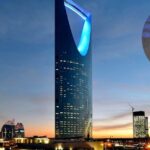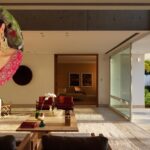What does it take to touch the sky? For Dubai, it took ambition, engineering genius, and an iconic vision to build the Burj Khalifa—soaring at 828 meters above the desert. This isn’t just a skyscraper; it’s a symbol of what’s possible when limits are redefined. From the heart of the Middle East, the Burj Khalifa rises like a modern-day obelisk—a beacon of innovation, prosperity, and architectural excellence. Officially opened in 2010, this awe-inspiring structure isn’t just the world’s tallest building—it’s a global statement. In this blog, we’ll explore the fascinating story behind its conception, design, construction, and why it continues to captivate imaginations worldwide. The Vision: More Than Just a Tower The Burj Khalifa was conceived as the centerpiece of Downtown Dubai, a 500-acre development project by Emaar Properties. At the time, Dubai was rapidly transforming into a global hub for business, tourism, and luxury. But the Emirate didn’t just want a tall building—it wanted the tallest. The goal was simple yet audacious: create a global icon that would symbolize Dubai’s ambition and economic progress. Inspired by the desire to diversify from oil-dependence, the Burj was designed as a magnet for international tourism, investment, and architectural admiration. Who Designed the Burj Khalifa? The mastermind behind the Burj Khalifa was Adrian Smith, a renowned architect working with Skidmore, Owings & Merrill (SOM), a Chicago-based architectural firm known for its innovative skyscrapers. Design Inspirations: This combination of cultural roots and modern technology made the Burj not just an engineering marvel, but also …
Burj Khalifa: The Story Behind the World’s Tallest Skyscraper
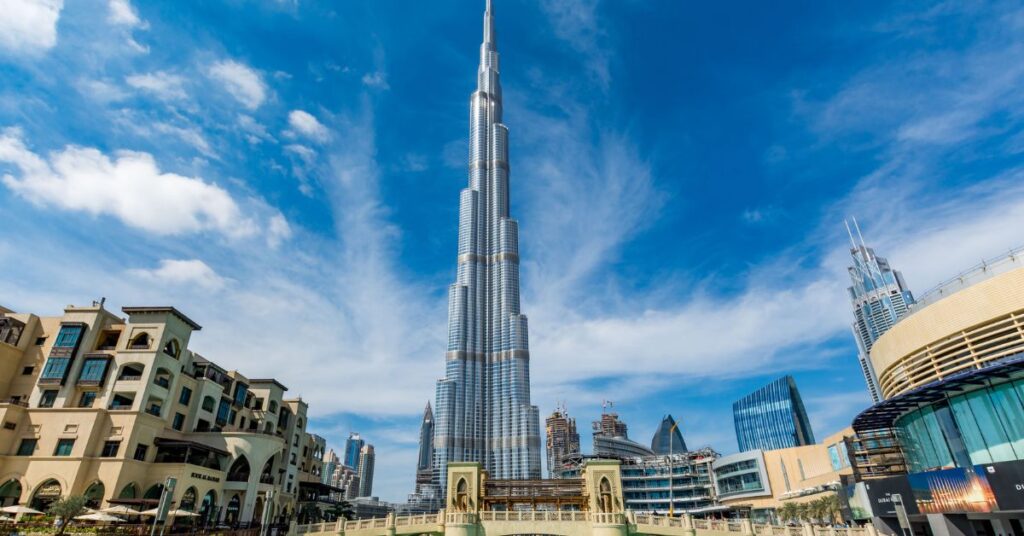
What does it take to touch the sky? For Dubai, it took ambition, engineering genius, and an iconic vision to build the Burj Khalifa—soaring at 828 meters above the desert.
This isn’t just a skyscraper; it’s a symbol of what’s possible when limits are redefined.
From the heart of the Middle East, the Burj Khalifa rises like a modern-day obelisk—a beacon of innovation, prosperity, and architectural excellence. Officially opened in 2010, this awe-inspiring structure isn’t just the world’s tallest building—it’s a global statement. In this blog, we’ll explore the fascinating story behind its conception, design, construction, and why it continues to captivate imaginations worldwide.
The Vision: More Than Just a Tower
The Burj Khalifa was conceived as the centerpiece of Downtown Dubai, a 500-acre development project by Emaar Properties. At the time, Dubai was rapidly transforming into a global hub for business, tourism, and luxury. But the Emirate didn’t just want a tall building—it wanted the tallest.
The goal was simple yet audacious: create a global icon that would symbolize Dubai’s ambition and economic progress. Inspired by the desire to diversify from oil-dependence, the Burj was designed as a magnet for international tourism, investment, and architectural admiration.
Who Designed the Burj Khalifa?
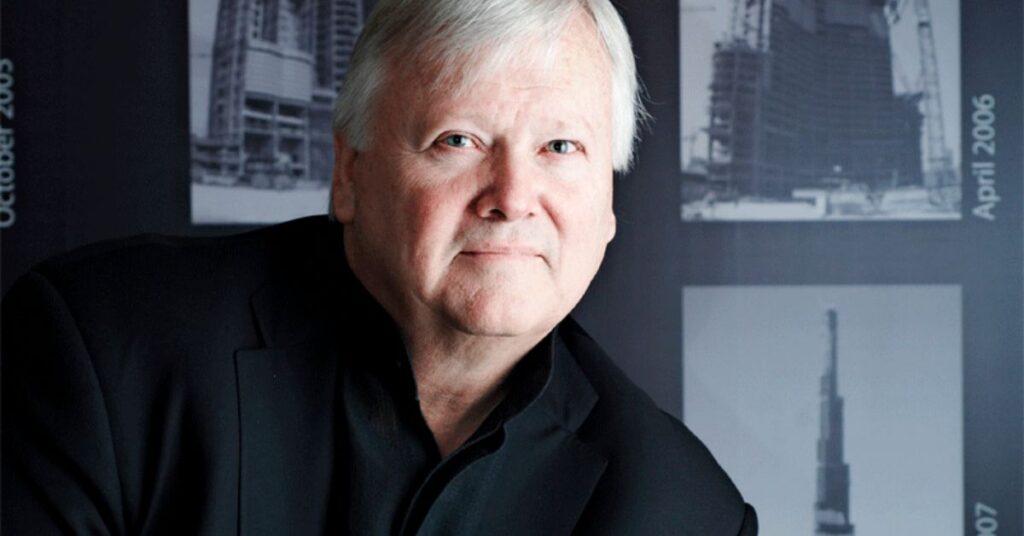
The mastermind behind the Burj Khalifa was Adrian Smith, a renowned architect working with Skidmore, Owings & Merrill (SOM), a Chicago-based architectural firm known for its innovative skyscrapers.
Design Inspirations:
- The Hymenocallis flower, a native desert plant, influenced the tower’s Y-shaped footprint
- Traditional Islamic architecture inspired the geometric spiraling pattern
- The structure narrows in tiers as it ascends, reducing wind forces and giving it a sleek, tapering silhouette
This combination of cultural roots and modern technology made the Burj not just an engineering marvel, but also an artistic tribute to the region.
Engineering Feats: Building for the Sky
Constructing a building of this magnitude came with unprecedented challenges. The Burj Khalifa required innovative engineering solutions to ensure safety, stability, and functionality.
Key Construction Highlights:
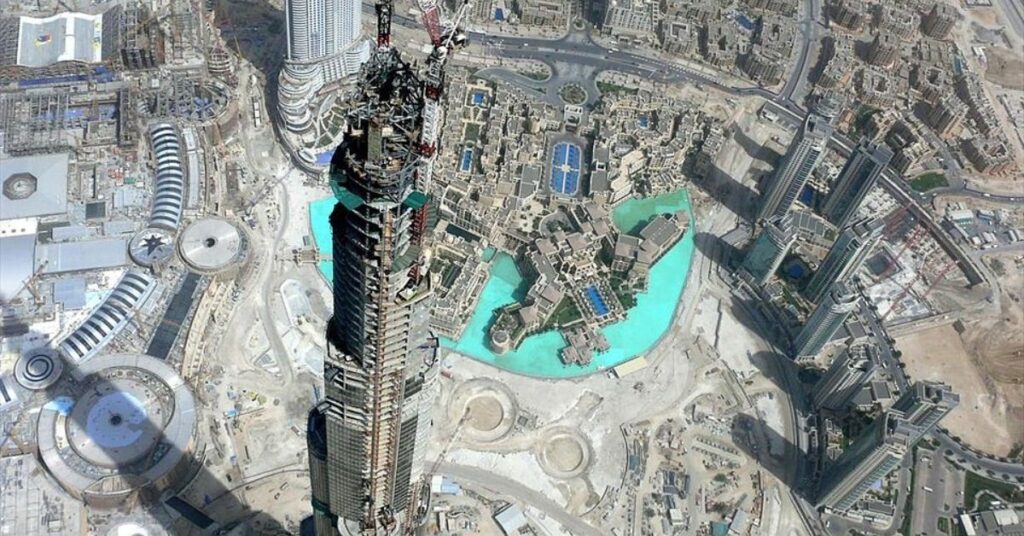
- The foundation includes 192 reinforced concrete piles buried more than 50 meters deep
- The “buttressed core” structural system—a unique three-lobed design—distributes the building’s enormous weight and resists wind forces
- The concrete used was specially designed to withstand desert temperatures exceeding 50°C
- Over 330,000 cubic meters of concrete and 39,000 tonnes of steel rebar were used
Built by South Korea’s Samsung C&T, the same company that constructed Taipei 101 and the Petronas Towers, the Burj Khalifa was a global collaboration from the start.
Timeline and Opening
Construction began in January 2004 and was completed in October 2009. It officially opened on January 4, 2010, with a spectacular ceremony featuring fireworks, light displays, and a global media frenzy.
The tower was initially known as the Burj Dubai, but was renamed Burj Khalifa in honor of Sheikh Khalifa bin Zayed Al Nahyan, the ruler of Abu Dhabi, whose government financially supported the project during the 2008 financial crisis.
The Numbers That Make It Iconic
- Height: 828 meters (2,717 feet)
- Floors: 163 (plus 2 additional basement levels)
- Elevators: 57 elevators, with speeds up to 10 m/s
- Observation Deck: Level 148, at 555 meters—once the highest in the world
- Construction Cost: Estimated at $1.5 billion
Interior Luxury and Mixed Use
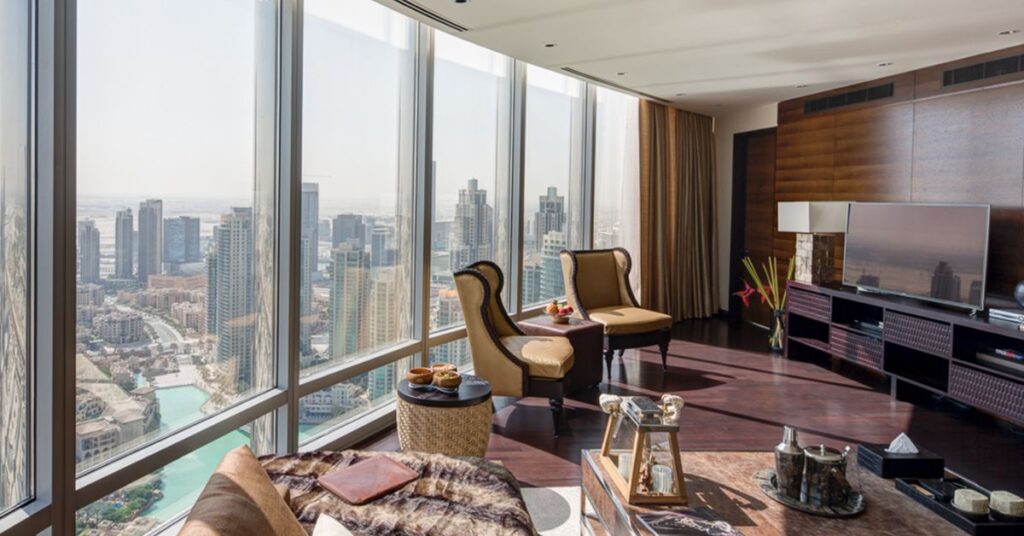
The Burj Khalifa isn’t just tall—it’s multifunctional. It includes:
- Residences: 900 private apartments (sold out within hours of launch)
- Corporate Suites: Spread across 37 floors
- The Armani Hotel: The first of its kind, personally styled by Giorgio Armani, occupying 15 levels
- At.mosphere Restaurant: Located on Level 122, one of the highest restaurants in the world
- Sky Lobbies, Spas, and Gyms: Designed to serve high-net-worth residents and international guests
The interiors feature materials like hand-cut stone, Venetian stucco, silver travertine, and polished dark wood, all carefully curated to reflect opulence and modern refinement.
Observation Deck: At The Top
One of the Burj Khalifa’s most popular attractions is “At The Top,” the observation deck on the 124th, 125th, and 148th floors. It offers 360-degree views of Dubai, the Arabian Gulf, and, on clear days, even the shores of Iran.
High-speed elevators whisk visitors upward in under a minute, offering a thrilling, sky-piercing experience. Interactive exhibits along the way showcase the building’s construction journey and global significance.
Sustainability: Built with the Future in Mind
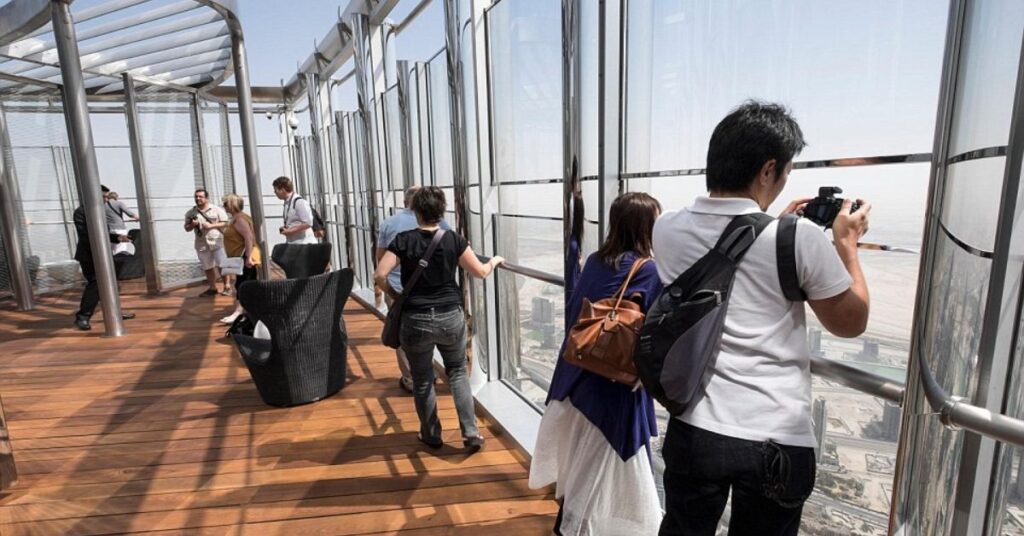
Despite its scale, the Burj Khalifa integrates several sustainable technologies:
- Condensation recovery system collects water from the air conditioning to irrigate landscaping
- Low-E glass and shading systems reduce solar heat gain
- Intelligent building management systems optimize energy use
Though not a “green” building by all modern standards, it laid the groundwork for integrating sustainability into supertall towers.
Cultural and Economic Impact
The Burj Khalifa has become more than a building—it’s a symbol of modern Dubai. It attracts:
- Tourists: Millions each year visit the tower and Downtown Dubai
- Investors: Prime real estate and commercial offices
- Media Attention: Featured in films like Mission: Impossible – Ghost Protocol
Its presence boosted Dubai’s image globally, turning it into a luxury and architectural capital.
Did You Know? Lesser-Known Facts
- The building sways up to 1.5 meters at the very top due to wind
- Window cleaning takes 3-4 months to complete a single cycle
- The tip of the spire can be seen from 95 kilometers away on a clear day
- Around 12,000 workers were on-site at the construction peak
Conclusion: A Tower That Redefined the Possible
The Burj Khalifa is more than the sum of its records and materials. It represents the bold ambition of a city, the genius of modern engineering, and the artistic ability to turn dreams into structures. It’s a modern-day pyramid—a man-made wonder that will continue to awe generations.
Whether you’re seeing it for the first time or learning about its journey, the Burj Khalifa isn’t just the tallest building in the world. It’s a story told in steel, glass, and sky.

